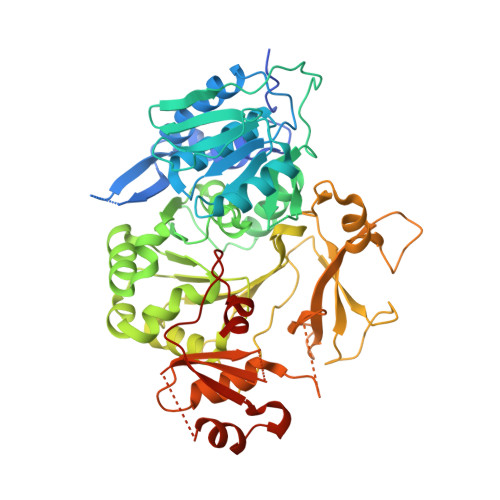Engineering the Substrate Specificity of (S)-beta-Phenylalanine Adenylation Enzyme HitB.
Wang, D., Miyanaga, A., Chisuga, T., Kudo, F., Eguchi, T.(2024) Chembiochem 25: e202400383-e202400383
- PubMed: 38805007
- DOI: https://doi.org/10.1002/cbic.202400383
- Primary Citation of Related Structures:
8YYQ, 8YYR - PubMed Abstract:
Adenylation enzymes catalyze the selective incorporation of aminoacyl building blocks in the biosynthesis of nonribosomal peptides and related natural products. Although β-amino acid units are one of the important aminoacyl building blocks in natural product biosynthesis, very little is known about the engineering of β-amino acid adenylation enzymes. In this study, we engineered the substrate specificity of the (S)-β-phenylalanine adenylation enzyme, HitB, involved in the biosynthesis of macrolactam polyketide hitachimycin. Based on the previously determined structure of HitB wild-type, we mutated Phe328 and Ser293, which are located near the meta and ortho position of the (S)-β-phenylalanine moiety, respectively. As a result, the HitB F328V and F328L mutants efficiently activated meta-substituted (S)-β-phenylalanine analogs, and the HitB T293G and T293S mutants efficiently activated ortho-substituted (S)-β-phenylalanine analogs. Structural analysis of the HitB F328L and T293G mutants with the corresponding nonhydrolyzable intermediate analogs revealed an enlarged substrate binding pocket for (S)-β-phenylalanine analogs, providing detailed insights into the structural basis for creating enzyme substrate promiscuity. Our findings may be useful for production of various β-amino acid-containing natural product analogs.
Organizational Affiliation:
Tokyo Institute of Technology, Department of Chemistry, JAPAN.















